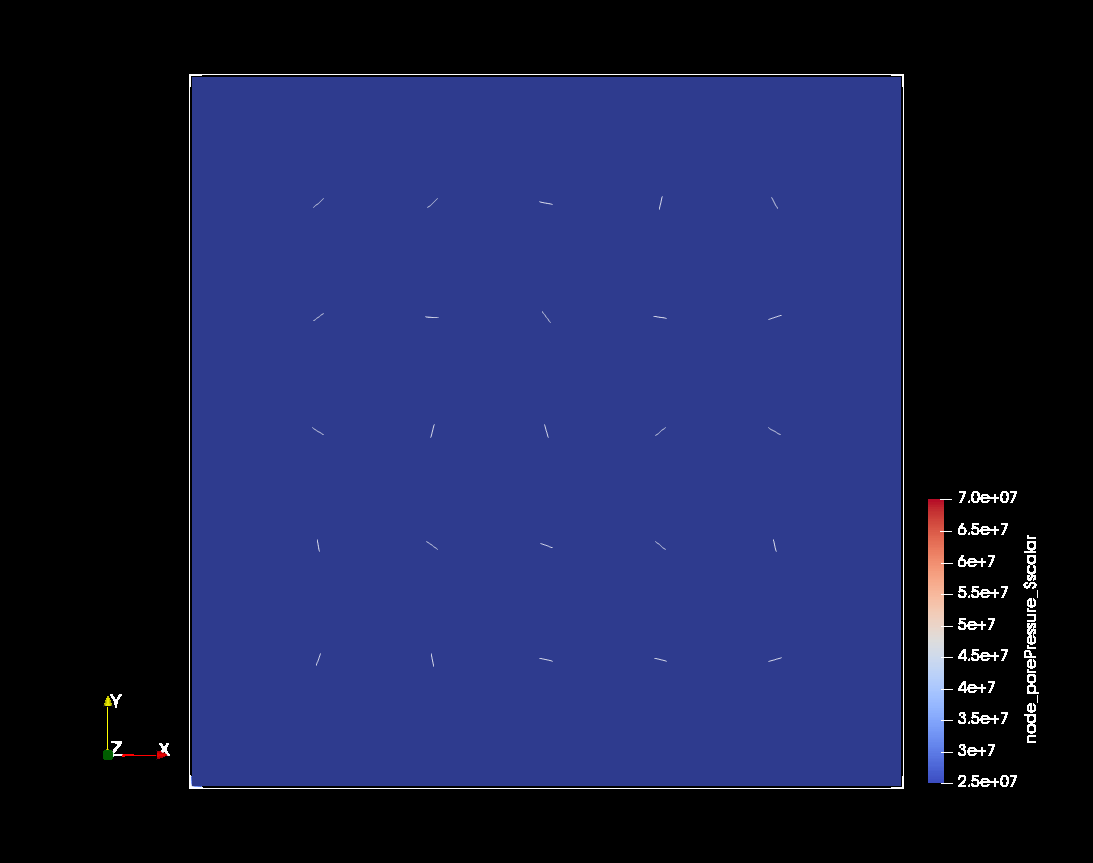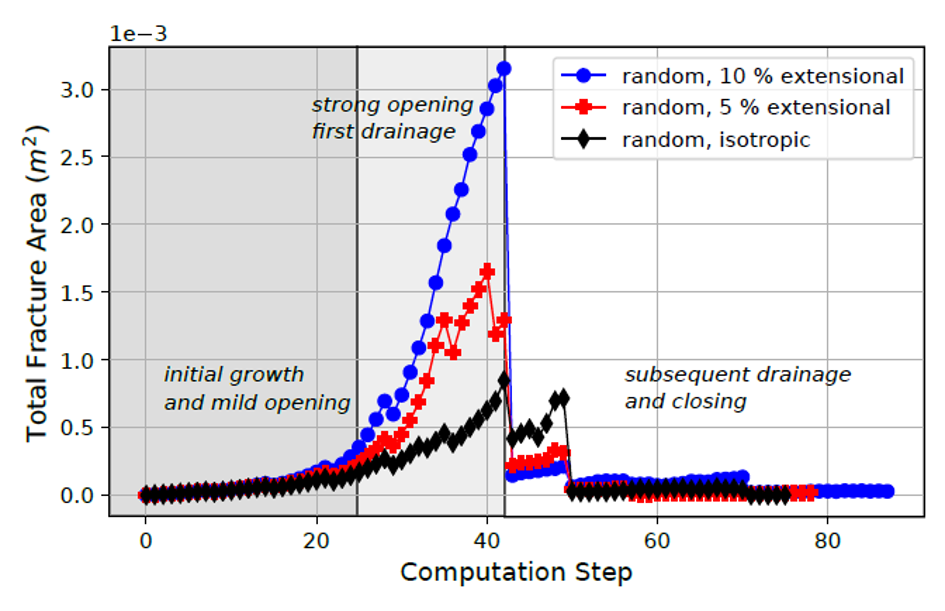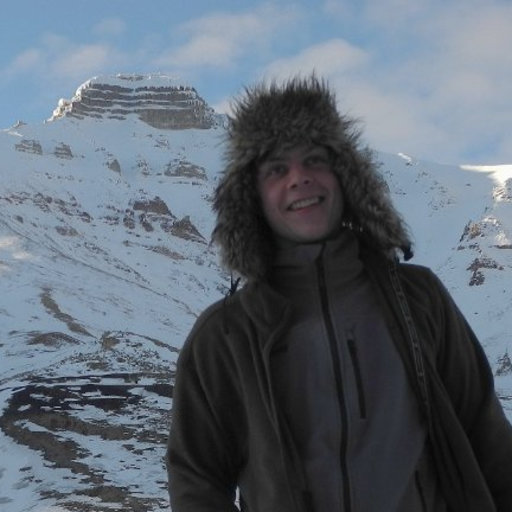
Ole Rabbel – University of Oslo
Have you ever wondered what happens when hot magma intrudes into organic-rich sedimentary rocks?
As hot magma ascends through the Earth’s crust towards the surface, it commonly intrudes the pre-existing rock layers in the form of vertical or horizontal sheet-like bodies, i.e. dykes and sills. In sedimentary basins, this process often leads to a scenario where hot magma intrudes organic-rich layers, such as shales, rapidly heating them to temperatures of several hundred degrees.
Depending on the temperature and pressure, the organic matter within the shales is then quickly converted into liquid or gaseous hydrocarbons – potentially within a few years, months, days or even hours. This fast fluid generation, combined with the very low permeability of shales, leads to a large overpressure which is capable of breaking the rocks and creating escape routes for the fluids (Figure 1).

At the University of Oslo, I integrate fieldwork, subsurface data, and numerical modelling to investigate the processes around igneous intrusions emplaced in organic-rich shale. I am interested in understanding how fracture networks evolve to create permeable pathways for the fluids to escape, and where these fluids migrate to.
I am lucky enough to have the Neuquén Basin, Argentina, as my natural laboratory to collect evidence for the generation of hydrocarbon in association with magmatic intrusions. Here, I find many large bitumen fractures which are punching through both shale layers and intrusions (Figure 2). I found that the bitumen here is in fact graphitic, meaning that it must have been heated to very high temperatures, which burial depth alone is incapable of reaching in our study area. Since the same shales located further from the intrusions have not produced any hydrocarbons, I interpret that these observations are evidence of intrusion-driven maturation and fracturing, and that the organic-rich fluids enter fractured intrusions while they are still hot. These findings indicate the existence of a different scenario than previous studies, which assumed impermeable intrusions and focused on hydrothermal vent structures and the release of gases into the atmosphere.

To understand how these fracture networks evolve, I used the extended Finite Element Method (xFEM) to model a network of growing fractures due to fluid overpressure. I established a methodology to monitor several fracture network parameters (total fracture length, propagation angles, total fracture opening, connectivity), which helps to quantify the state of the fracture network and link it to the physics of the fracturing process.
In this way, I was able to identify a three-phase evolution of the network. The first phase is characterized by individual growth of the fractures which respond mainly to the far-field stresses. Thereafter, local stress alterations around the growing cracks start to interact, diverting the initial propagation direction and controlling fracture coalescence. In this second phase, the fractures also have their maximum opening. Finally, when drainage at the model boundary releases the overpressure, the growth stops and the fractures close (Figure 3 and 4). Equipped with this workflow and initial understanding, the goal for future research is to model scenarios that are more realistic and include different lithologies, anisotropy etc.


Figure 3. GIF animations of fracture network simulations, with fluid pressure colour-coded. Note how fractures first grow in their initial direction and then deviate to connect with their neighbors.

The international and interdisciplinary nature of my project is especially satisfying – I collaborate with both research institutes and companies from Argentina, Norway and Germany. The combined competence really adds to a more holistic understanding of the coupled thermo-hydro-mechanical processes around intrusions, producing field and numerical studies that go hand in hand despite the wide range of applied methods. I would like to thank everyone involved from Argentina (University of La Plata, CONICET, YTEC), Norway (University of Oslo) and Germany (geomecon GmbH) for making this possible, and of course the VIPS crew for the invitation to present our work!

Ole Rabbel (ole.rabbel@geo.uio.no) is in his fourth and final year of his doctoral studies at the University of Oslo, Norway. After studying exploration geophysics during his masters, Ole is now focusing on geological fieldwork and numerical modeling to understand coupled Hydro-Thermo-Mechanical processes in and around magmatic intrusions emplaced in organic-rich shale.
The project includes extensive work in the Argentina and the Svalbard Archipelago in the Norwegian Arctic. His supervisors are Olivier Galland and Karen Mair, and the project is run in collaboration with Y-TEC, the University of La Plata, Argentina and the University Center in Svalbard.
You can read more on Ole’s latest research in modelling fracture network evolution in organic-rich shales here.
Want to know more about magmatic intrusions?
As part of our continuing VIPS Virtual Seminar Series, Professor Eleonara Rivalta recently presented: What pathways for ascending magma? Implications for geophysics and petrology. Eleonara discussed the coupling of magma flow and host rock deformation when modelling the ascent of magma through the Earth’s crust. You can now watch a recording of this exciting talk on YouTube!

 An Explosive Start to 2021
An Explosive Start to 2021
Leave a Reply